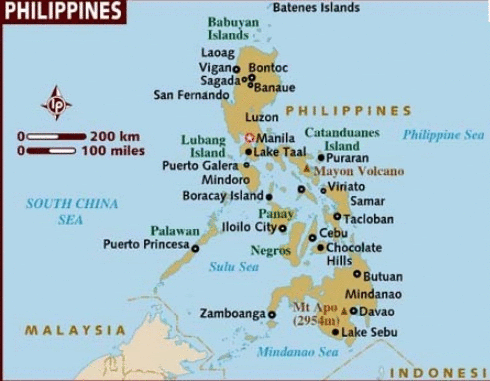The US wasn’t exactly sure what do to with the Philippines. The people were also upset that the US didn’t consult them about taking over, even though Dewey had encouraged Aguinaldo to revolt. To compensate, on January 20, 1899, President McKinley appointed the First Philippine Commission (Schurman Commission) to make recommendations. (3) On January 23rd, 1899, they made the Malalos Constitution and the First Philippine Republic.
Despite the efforts, the Philippine War of Independence (first hostilities) began February 4, 1899 and lasted for two years. The US needed 126,000 soldiers. 4,234 Americans died compared to 16,000 Filipinos. 200,00 civilians died from famine and disease. (3) Aguinaldo escaped the capture of Malalos on March 31, 1899. He was driven into Northern Luzon. His troops turned to guerilla warfare (2). In May, American commander General Ewill Otis demanded unconditional surrender, but Aguinaldo kept fighting.
On March 23rd, 1901, the U.S captured Aguinaldo and he was forced to swear allegiance to the US and tell his soldiers to stop fighting. In July 4th, 1901, the U.S declared the end of military rule. (3) Even though his efforts failed, President McKinley’s Schumann Commission began to acknowledge the liberals. He realized how badly they wanted independence, and established institutions for a civilian domestic government. (5) On March 16, 1900, he appointed the Second Philippine (Taft) Commission and gave it the legislative and executive authority to use civilians. The Taft Commission abolished Spanish influence and authority and established laws and institutions of a modern civil state. The Commission established A judicial system, elective municipal government, and provincial government. The Philippine Organic Act of 1902 gave Filipinos the privilege of protection under the US Bill of Rights.
Shortly after, the Philippine Organic Act revoked Roman Catholicism as the official religion of the state and created a firm separation of church and state. In 1904, they paid the Vatican 7.2 million dollars for Church lands, which were eventually sold back to the Filipinos. Some were able to buy their land back, but most who bought it were wealthy estate owners who could afford it. (5)

No comments:
Post a Comment